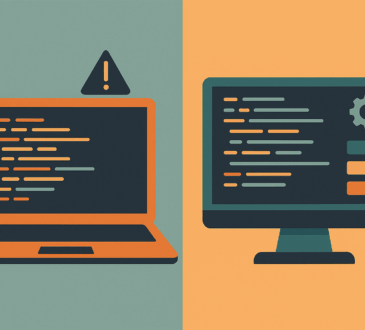
Hey everyone, it’s your friendly neighborhood SysAdmin here, and today we’re diving deep into something every computer user—from the casual browser to the power user—needs to know: keeping your software updated safely and efficiently. In a world where new vulnerabilities pop up faster than cat videos, knowing how to mass-update your system with a few simple commands is a superpower.
Forget clicking through endless prompts or letting updates disrupt your flow. We’re talking about streamlining your digital life, ensuring you’re always on the cutting edge of security and performance, all with a few lines of code.
Why Command-Line Updates?
You might be thinking, “Isn’t there an ‘Update All’ button somewhere?” Sometimes, but relying solely on graphical interfaces can be slow and less comprehensive. Command-line tools offer:
- Speed: Initiate updates for multiple applications or even your entire OS with a single command.
- Control: Specify exactly what gets updated and when.
- Automation Potential: Script these commands for scheduled, hands-free updates (perfect for the busy professional!).
- Security: Ensure all components are patched against the latest threats.
Let’s break down how to do this across the major operating systems.
macOS: The softwareupdate Powerhouse
If you’re a Mac user, you’ve got a fantastic built-in tool called softwareupdate. It’s your one-stop shop for managing system updates directly from the Terminal.
1. Checking for Updates
Before you install anything, it’s always good practice to see what’s available. Open your Terminal and type:
softwareupdate -l
This command will list all pending updates, including the software name and its new version number. You might need to use sudo softwareupdate -l for a more comprehensive list, especially for system-level updates.
2. Installing All Available Updates
Ready to update everything? This command will install all available updates recommended by Apple:
sudo softwareupdate -i -a
sudo: Grants administrative privileges (you’ll be prompted for your password).-ior--install: Initiates the installation process.-aor--all: Installs all available updates.
If an update requires a restart, the Terminal will let you know. You can even add -R to automatically restart your system after the installation is complete.
3. Installing Specific Updates
Sometimes, you only want to install a particular update. Let’s say you see “macOS Catalina 10.15.7 Update” in your list. You can install it specifically using:
sudo softwareupdate -i 'macOS Catalina 10.15.7 Update'
Just replace the name with the exact name of the update from your list.
4. Downloading Updates Without Installing
Want to stage updates for later? You can download them without installing:
sudo softwareupdate -d -a
This will download all pending updates to your Mac, but won’t install them.
A Note on mas-cli for Mac App Store Apps:
While softwareupdate handles system and Apple-related software, for apps downloaded from the Mac App Store, consider mas-cli. It’s a command-line interface specifically designed for scripting and automating Mac App Store updates. You can find it on GitHub.
Windows: The winget Revolution
For Windows users, winget (Windows Package Manager) has been a game-changer. It allows you to manage applications from the command line, including installing, uninstalling, and—you guessed it—updating!
1. Update Everything with winget
Open Command Prompt (CMD) or PowerShell as an administrator. The simplest way to update all your applications managed by winget is:
winget upgrade --all
This command tells winget to upgrade every application it recognizes that has an available update. It’s the closest thing Windows has to a “mass update” button for third-party software outside of the Microsoft Store.
2. Handling System Updates (Windows Update)
For core Windows system files and Microsoft Store apps, Windows Update remains the primary method. While there isn’t a single cmd command to trigger all those updates automatically in the background like winget does for other apps, you can open the Windows Update settings page directly from the command line:
start ms-settings:windowsupdate-action
Run this in an administrator Command Prompt, and it will open the Windows Update section, where you can then manually check for and install updates.
Linux (Ubuntu Example): apt for the Win!
Linux distributions are famously command-line friendly, and package managers like apt (Advanced Package Tool) in Ubuntu make system-wide updates incredibly simple.
1. Update Your Package Lists
First, you need to refresh your system’s understanding of available packages and their latest versions:
sudo apt update
This command fetches the latest information about packages from the repositories.
2. Upgrade All Installed Packages
Once your package lists are updated, you can upgrade all installed packages to their newest versions:
sudo apt upgrade
This command will download and install all available updates for your existing software.
A Quick Recap Table for Your Cheat Sheet
| Operating System | Action | Command | Notes |
| macOS | List available updates | softwareupdate -l | Use sudo for comprehensive listing. |
| Install all updates | sudo softwareupdate -i -a | -R can be added to restart automatically. | |
| Install specific update | sudo softwareupdate -i 'Update Name' | Replace ‘Update Name’ with the exact name. | |
| Download all updates | sudo softwareupdate -d -a | Downloads without installing. | |
| Windows | Update all winget apps | winget upgrade --all | Run Command Prompt/PowerShell as Administrator. |
| Open Windows Update | start ms-settings:windowsupdate-action | For system and Microsoft Store updates. | |
| Linux (Ubuntu) | Update package lists | sudo apt update | Refreshes available updates info. |
| Upgrade all packages | sudo apt upgrade | Installs all updates for existing software. |
Final Thoughts: Update Smart, Stay Secure!
Keeping your software updated isn’t just about getting new features; it’s a critical part of maintaining your digital security and ensuring your system runs smoothly. By incorporating these simple command-line updates into your routine, you’ll be well on your way to becoming a true computer whisperer, managing your digital world with precision and efficiency.
Happy updating, and stay safe out there!




